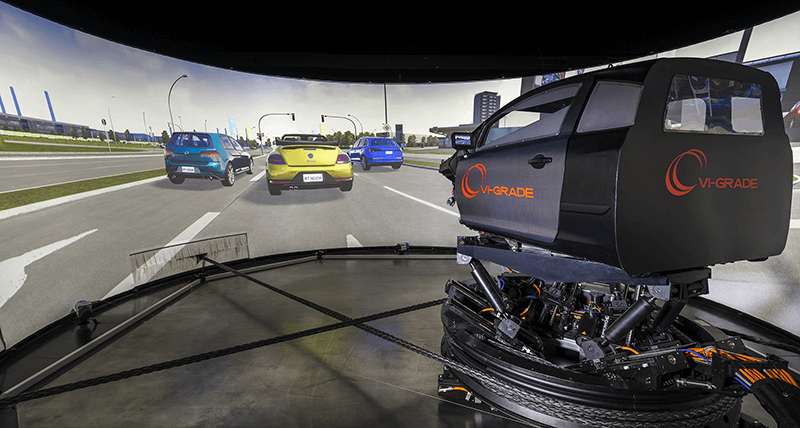
Hexagon’s simulator software eliminates need for physical automotive prototypes
August 30, 2022
By Manufacturing AUTOMATION
 VI-grade Driving Simulators certifies Hexagon's Adams Real Time simulation software. (Photo: Hexagon)
VI-grade Driving Simulators certifies Hexagon's Adams Real Time simulation software. (Photo: Hexagon) Hexagon’s Manufacturing Intelligence division announced that its Adams Real Time multibody dynamics simulation software has been validated for operation on VI-grade Driving Simulators. This will allow automotive manufacturers and tier one automotive suppliers to develop safe and desirable driver experiences efficiently, without physical prototyping.
Rapid product development timelines in the automotive industry are compounded by shrinking physical prototype budgets that necessitate greater use of simulation. Hexagon explains that Adams can be used to build virtual vehicle prototypes. The Adams Real Time Hardware-in-the-Loop (HIL) capabilities will allow to bridge the gap with physical tests. The high-fidelity simulations they develop are used to evaluate engineering decisions against ride, handling and durability targets to produce safe and comfortable cars.
VI-grade helps engineers accelerate automotive innovation by enabling physical testing of Computer Aided Engineering (CAE) models, without the need to manufacture prototypes of systems or vehicles. Adams Real Time is now recognized by its VI-Certified program. That includes only those third-party solutions that pass stringent tests for real-time reliability and safety.
The Adams simulation models routinely created for vehicle dynamics and handling can be used for the real-time testing and validation tasks performed on VI-grade simulators simply by applying Adams Real Time settings.
Using Adams Real Time, users can extend the use of their existing models directly into HIL or the Driver-in-the-Loop (DIL) testing and validation phases. The topology and parametrics of the vehicle model are preserved when Adams Real Time is used in real-time applications, allowing engineers to explore different vehicle configurations and tune them. This enables stakeholders in adjacent departments to collaborate more effectively. Standardizing on a single model throughout the product lifecycle also helps to eliminate unproductive and error-prone translations between different simulation software.
Advertisement
- Manufacturing AUTOMATION’s future leaders: Meet Stefan Glibetic
- Hybrid EF|A 2022 event to focus on modularization, standardization and automation